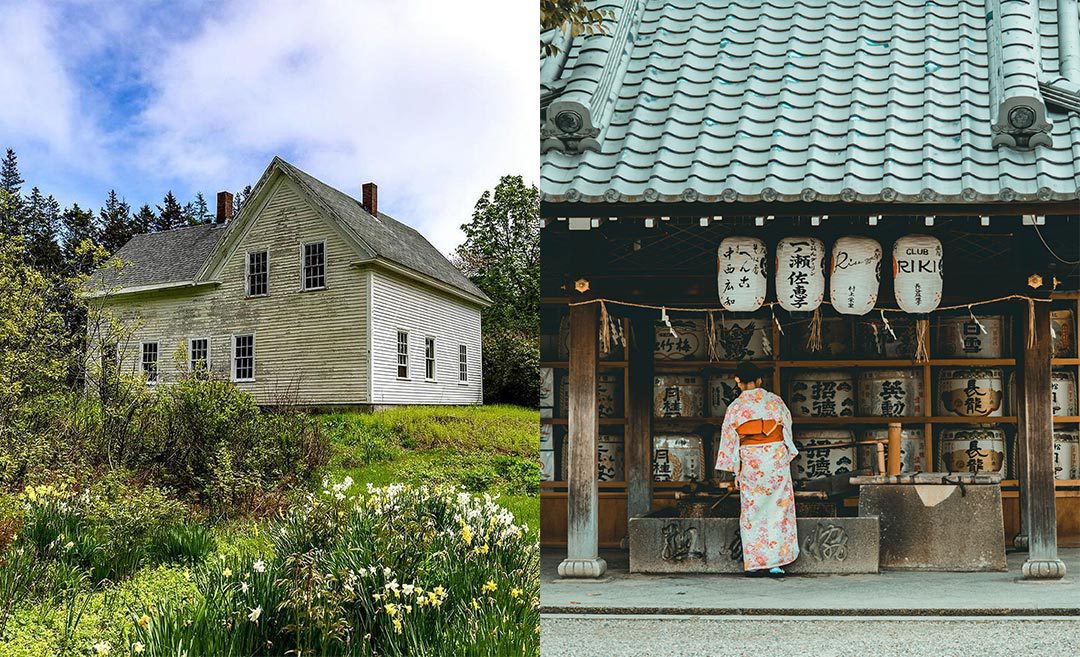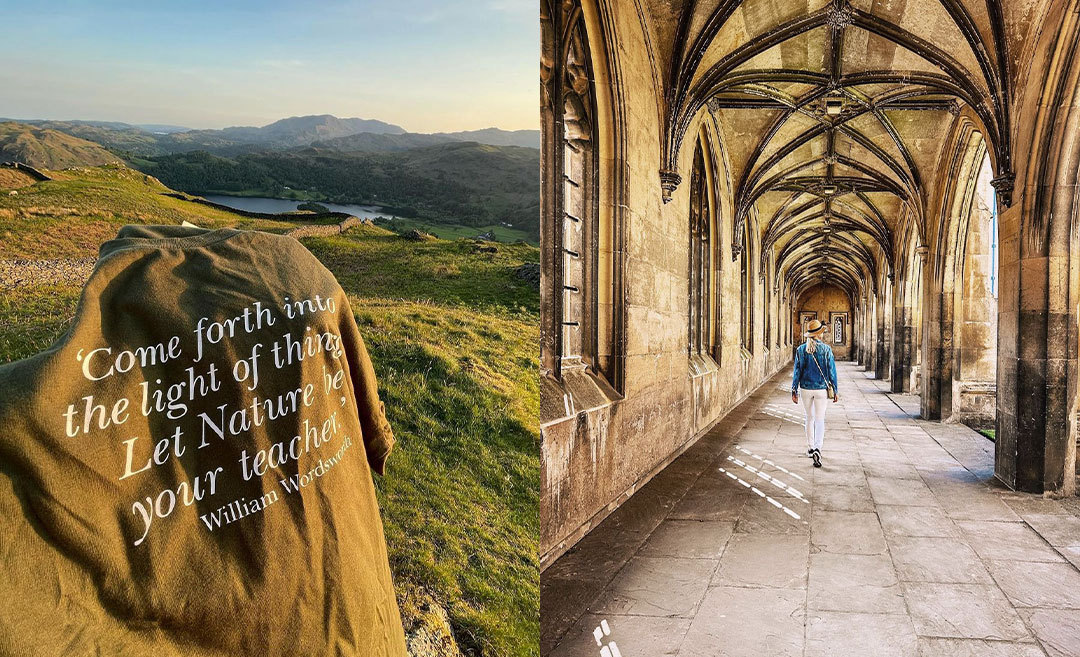Great storytellers are those who can look at ordinary places and forge extraordinary stories out of them. We encourage travel because travel gives us stories. Exposure to the arts, history, culture, people, and places weave imagination into ideas, which become the basis of all our favourite stories. Here, we’ve listed some of our favourite books inspired by real-life places.
1. Charlotte’s Web by E. B. White | Maine, USA
Charlotte’s Web is a charming tale of a runt of a litter of pigs named Wilbur, who forms a friendship with Charlotte, the resident spider at Zuckerman’s barn. The story celebrates life, honours death, and exemplifies love and friendship in a tender and heartwarming manner.
E. B. White’s classic and beloved book was very much inspired by his home, a 44-acre farmhouse in Brooklin, Maine. The private property where White lived until his death is where you’ll find the barn that set the stage for the author’s book, Charlotte’s Web.
White’s historic family home is where he wrote many of his most celebrated children’s books and essays. The home has been well maintained to this day and was put up for sale some years ago, but the barn still remains.
2. All the Light We Cannot See by Anthony Doerr | Saint-Malo, France
Recently released as a limited series on Netflix, All The Light We Cannot See is a historical fiction set in Paris during the Second World War. The story follows Marie-Laure, a blind girl who lives near the Museum of Natural History, where her father works, and Werner Pfennig, an orphan boy in Germany.
Their lives intertwine when a cursed and sought-after jewel known as the Sea of Flames brings them to the port city of Saint-Malo in France. Anthony Doerr’s writing stunningly depicts the moral complexities of war and greed and how there is light to be found even in the darkest of places.
The cliff-top town, built as a stronghold for privateers, paints both a melancholic and hopeful scene in the landscape of the story and its heavy subject matter. For lovers of the novel and Netflix series, adding the walled citadel of Saint-Malo to your travel bucket list is a good idea!
3. Journey to the Center of the Earth by Jules Verne | Snæfellsjökull Volcano, Iceland
Professor Lidenbrock, his nephew, and an Icelandic guide trek down an extinct volcano leading to the centre of the earth. Discovering prehistoric creatures in a hidden world beneath the volcanic crater, adventure and danger ensue.
No stranger to the kids who grew up reading and loving this classic, Journey to the Center of the Earth, is in the words of Professor Lidenbrock, “… an extraordinary journey.”
Much of the landscape for the imaginative scenes in Jules Verne’s epic science fiction adventure novel was inspired by Snæfellsjökull Volcano in Iceland. The land of fire and ice created the perfect stage that set Verne’s imagination on fire as he built the world for the novel’s subterranean adventure.
Located in western Iceland, Snæfellsjökull is a 700,000-year-old active volcano peaking at 1,446 metres in height. People from all over the world travel to Iceland to hike this glacier-capped natural wonder.
4. Dune by Frank Herbert | Florence, Oregon, USA
Set in the distant future on a brutal desert planet named Arrakis, Frank Herbert’s Dune tells the story of a young Paul Atreides and his family’s journey through adversity. When destiny bestows upon Paul the role of messianic leader and sets them on a course of chaos, betrayal, and war, different forces battle for control of melange, also called ‘the spice’.
Unlike the film’s otherworldly film location set in Jordan, the author was inspired by a place much closer to his home. In the coastal city of Florence lies the lesser-known terraformed Oregon sand dunes that served as inspiration for the landscape of Arrakis and the environmental themes in Dune.
Fascinated by the challenging and ever-changing nature of the dunes, Herbert set out to write an article about the dunes in Florence and the struggle between man and nature. While the article was never published, it was the genesis of the Dune novels.
5. Memoirs of a Geisha by Arthur Golden | Kyoto, Japan
Memoirs of a Geisha is historical fiction written by American author Arthur Golden. Backdropped by life before, during, and after World War II, the story follows a young Nitta Sayuri as she is thrust into a life of becoming and working as a geisha in Kyoto, Japan. Written sensationally, the book romanticises a life filled with grief, loss, and despair in a manner that leaves the reader bewildered, heartbroken, and enchanted.
The gripping tale, though not a true story or one that measures up to the accuracy or reality of genuine geisha traditions and Japanese women, was inspired by Mineko Iwasaki, known as ‘The Most Famous Geisha’ in Kyoto’s geisha district. The novel is predominantly set in the district of Gion and often references actual places found in Kyoto.
6. Crazy Rich Asians by Kevin Kwan | Singapore
What does old money look like in Southeast Asia? What happens when an Asian American falls for the heir of such great wealth and splendour and becomes the envy of Singapore’s high society?
Kevin Kwan’s satirical romantic comedy is about Rachel Chu, who spends the summer in Singapore with her boyfriend, Nicholas Young, and his family. Failing to inform his girlfriend of a few vital details about his family, Rachel soon realises that Nick’s life is likened more to royalty than the ‘guy next door’.
Kwan loosely based the novel on his childhood in Singapore. The novel celebrates life in the island country, noting cultural references, iconic restaurants, and celebrated landmarks in Singapore. Though the film features many places shot in its neighbouring country, Malaysia, the novel offers a wondrous depiction of the everyday joys of ordinary folk and social elites in Singapore.
7. The Great Gatsby by F. Scott Fitzgerald | Long Island, New York, USA
We’d be doing you a disservice if we did not mention F. Scott Fitzgerald’s, The Great Gatsby, in our list of favourite stories. The Jazz Age, grand parties, and a fabulous home stand as the mise-en-scène to the ill-fated love story of the fabulously wealthy Jay Gatsby and Daisy Buchanan.
Taking inspiration from his own life and the wild parties of its time, Fitzgerald found his Gatsby in the lifestyle of the affluent and famous residents on Long Island’s North Shore. The Gatsby home is said to have drawn inspiration from several properties in the area, including Marcus Loew’s Pembroke Mansion in Glen Cove, Long Island, which was the scene of early 1920s jazz parties that Fitzgerald attended.
Though the Pembroke Mansion no longer stands, many North Shore properties have allegedly inspired Fitzgerald’s writing including Oheka Castle, Harbor Hill, Beacon Towers, and Winfield Hall, amongst others.




